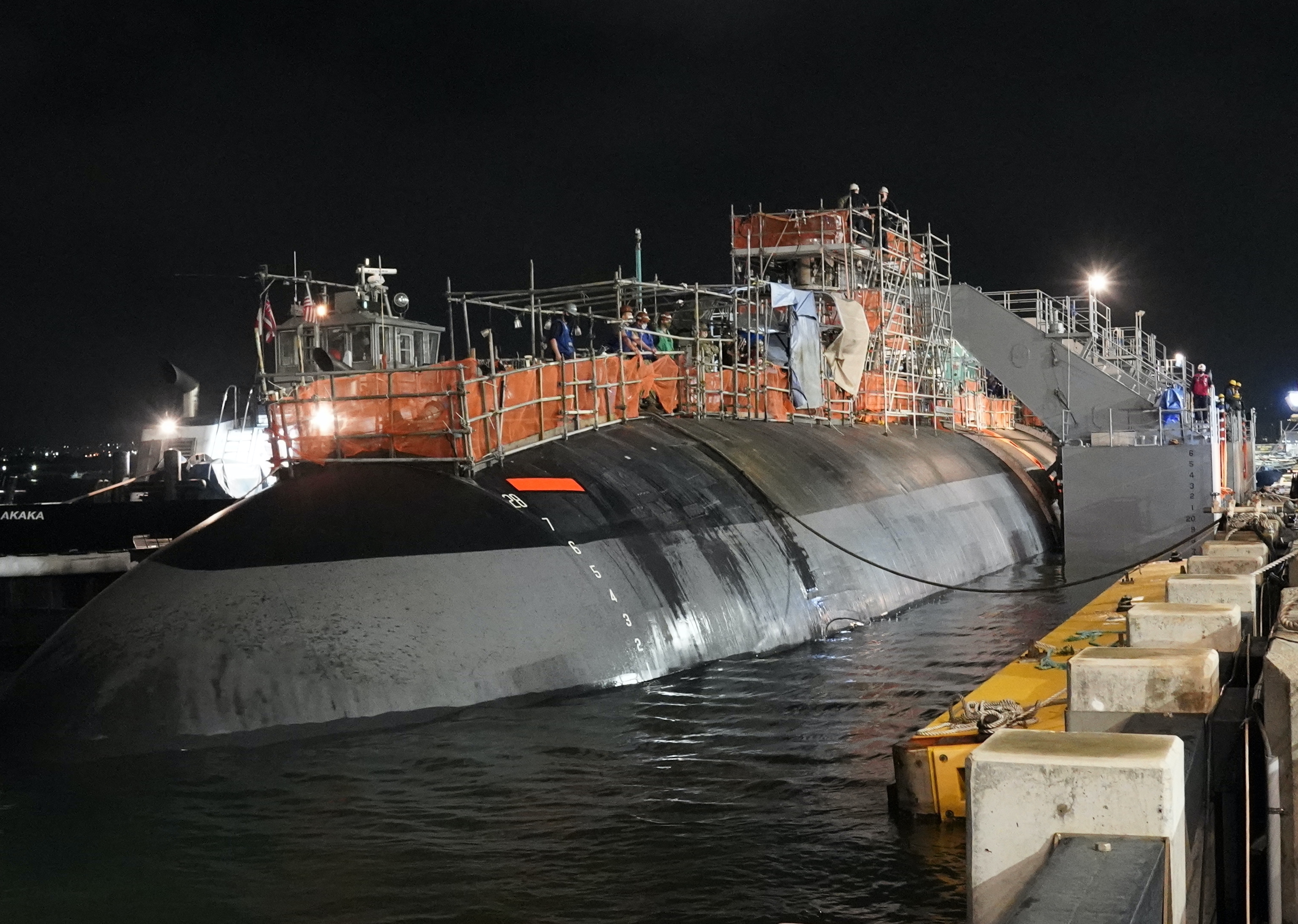
This story has been updated to clarify that USS Boise (SSN-764) is waiting to begin its engineering overhaul.
Cutting the Navy’s ship maintenance backlog will require recruiting and retaining skilled workers in the nation’s public and private shipyards, the nominee to head the sea service’s acquisition office testified Wednesday.
Nickolas Guertin appeared before the Senate Armed Services Committee Wednesday for consideration to become the assistant secretary of the Navy for research, development and acquisition.
During his testimony, Guertin raised concerns about workforce issues facing shipyards that are resulting in delays.
“Our ships don’t do us much good in shipyards and drydocks,” but the yards need the qualified labor force to return them more promptly to sea, he said.
Another factor contributing to delays is decaying infrastructure at public yards due to the lack of regular maintenance, Guertin said in response to SASC Chairman Sen. Jack Reed, (D-R.I.), who cited the case of USS Boise (SSN-764) as “the poster child” for years-long delays.
“It’s something we always have to keep our eye on,” Guertin said.
If confirmed, he pledged to see for himself the state of the facilities and what can be done to improve them.
The Navy pulled Boise from service in 2017 and scheduled it for work at Norfolk Naval Shipyard. The submarine was then sent to nearby HII’s Newport News Shipbuilding after delays at Norfolk and three other public yards due to revitalizing Ohio-class ballistic missile submarine revitalization and work on Nimitz-class nuclear carriers caused Boise to wait years for a maintenance availability.
Newport News then scrambled to bring its submarine repair facility up to standard with trained workers to meet the Navy’s demand. Boise is currently at Newport News waiting for an engineering overhaul. The Navy in its Fiscal Year 2024 budget request is seeking $600 million of incremental funding for the submarine’s overhaul.
The Navy’s Fiscal Year 2024 budget request asks for $2.7 billion for the Shipyard Infrastructure Optimization Program, a 20-year effort to modernize the four public shipyards’ infrastructure from dry docks to buildings and utilities like electrical grid and water supply.
Private yards like Newport News and General Dynamics’ Electric Boat “are still recovering from the pandemic” in overcoming supply chain disruptions and workers’ recovering from infection to meet production schedules, Guertin said.
Bringing to bear his experience as director of the Pentagon’s test and evaluation program, he added, “we need to embrace these [digital] tools” to accelerate ship design, testing, building and maintenance. Modeling and modularity help in this regard.
By using digital technology and modularity, the Navy can “rapidly field capabilities that work and to scale,” he said. They also can be upgraded rather than spending years in major overhauls.
Guertin acknowledged that the Navy needs to work with private industry on better definitions of intellectual property rights. He called the firms’ intellectual property rights “golden tickets” for future work that must be considered in contracts.
Guertin was not involved in a decision that zeroed out money for San Antonio-class amphibious warships in the Navy’s five-year spending plan.
“I’m perplexed that this [the mix of the 31 amphibious ships in the fleet] has been so controversial,” he said.
Several committee members reminded Guertin and Ronald Keohane, nominated to become the Defense Department’s assistant secretary for manpower and reserve affairs, that they are essentially competing for the same people in a shrinking pool of potential recruits.
“Everything should be on the table” in attracting recruits to the uniformed services, but “not lowering standards,” Keohane said. He and several panel members said reviews of prescribed medical drug use should be reevaluated and the services could benefit from prep programs like the Army’s to bring applicants up to physical fitness standard.
With low unemployment, recruiting this year will continue to be difficult.
The COVID-19 pandemic complicated the recruiting problem because it limited service recruiters’ abilities to get out into the community to talk in schools and meet coaches, teachers, parents and local leaders.
The services are also coming to realize that technology used by the private sector to find qualified applicants could be useful, Keohane said. He used the Navy following up with someone who consistently clicked on images of submarines as a potential recruit.
“Technology is out there” for that kind of recruiting, he said.
It also means re-examining “one of the unintended consequences of BRAC [Base Realignment and Closure],” Keohane said.
BRAC has moved the military more southern and southwestern, Keohane said. Young people in the northeast and midwest no longer see soldiers, sailors, airmen and Marines routinely in their communities.
Targeting those regions for enlistments could help expand the pool of eligible recruits, Keohane said.
Failing to meet recruiting goals also puts new pressure on retention since there are fewer qualified members wanting to re-enlist, several senators mentioned in their questioning.
When asked about service members discharged for failing to get vaccinated against COVID-19, Keohane said he “would advocate on their behalf” in reviewing their discharges and possible re-enlistment, but each service retains its discharge review process. The Pentagon does not have a specific path for service members who were separated over the vaccine to be reenlisted.
The vaccination requirement for COVID-19 for retention was eliminated in last year’s defense authorization bill. The Navy recently announced it was ending deployment restrictions on unvaccinated sailors.





